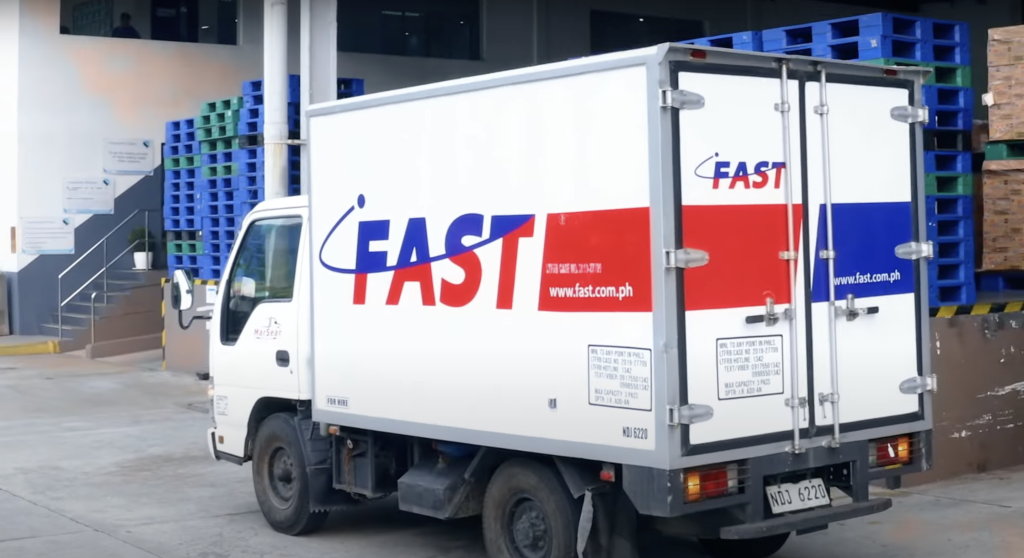
When it comes to understanding logistics and supply chain management, it’s no secret that warehouses play a critical role in any business that deals with physical goods.
Every warehouse operation should be in sync with the broader goals and strategies of the organization. The saying, “You can’t improve what you don’t measure,” couldn’t be truer in the context of warehouse management. With industries that demand speed and precision, warehouses must rise to the occasion, meeting ever-increasing client expectations.
That is why understanding the right key performance indicators (KPI) can empower warehouse operations to streamline its manufacturing process, allocate resources efficiently, and enhance overall performance. With the right reporting tools, KPI reports can also provide a standardized way to measure and evaluate past performance.
With FAST Logistics Group, the leading company of logistics and distribution solutions in the Philippines, warehouses operate by adopting innovative solutions that can enhance operational efficiency and monitor KPIs. Understanding and tracking KPIs, or key performance indicators, in the warehousing industry cannot be overstated.
What Is KPI, or Key Performance Indicator?
A KPI metric can serve as the compass that guides warehouse operations and marketing campaigns to have informed decision-making and process improvement, based on past performance and ultimately, greater profitability for the organization’s progress.
One of the unique challenges faced by warehouses in the Philippines is the archipelagic geography of the country. The dispersed nature of islands necessitates efficient logistics and distribution networks to ensure that goods reach customers in both urban centers and remote regions promptly.
Your KPI can provide information that leads to data-driven decisions to improve resource allocation, improved process flows, and enhanced overall productivity.
However, not all KPIs fall under the same category, and with an abundance of data available at our fingertips, it becomes crucial to identify the business metrics, or KPI dashboards, so one can truly measure and assess progress in performance tracking.
Why Your KPI Matters in Warehouse Management
It’s important to keep in mind that when warehouse key performance indicators align with the company’s objectives, all levels of the organization should work towards the same vision, fostering a more unified and focused workforce that meets business objectives.
For example, effective decision-making in warehouse management depends on accurate, real-time data, with the possibility of problems to be faced by the situation. The KPI you use will provide a direct link between warehouse performance and the overall success of the business.
FAST Logistics Group offers Warehouse Management System (WMS), a cutting-edge software solution that can enhance the efficiency of distribution and fulfillment centers. This Warehouse Management System is powered by Honeywell™ to optimize and streamline various warehouse operations.
Take a look at some of the Key Performance Indicators (KPIs) for Warehouse Productivity:
Inventory Turnover and Holding Costs
Apart from delivering the right products on time, maintaining an optimal level of inventory is equally crucial in a KPI report. Inventory turnover, a measure of how quickly inventory is sold and replaced, helps warehouse operations strike the right balance. Too much inventory ties up capital and storage space, while too little can lead to missed sales opportunities.
Inventory turnover measures how quickly a warehouse sells and replenishes its inventory within a specific timeframe, such as a month or a year. It quantifies the relationship between the cost of goods sold (COGS) and the average inventory level. A high ratio indicates that inventory is selling quickly, while a low ratio suggests slow-moving or stagnant inventory.


Holding costs encompass the expenses associated with storing and maintaining inventory over time. These financial metrics include rent or lease payments for warehouse space, utilities, insurance, security, inventory tracking systems, and labor required for managing inventory and business processes.
Accompanying both are essential and strategic key performance indicators. These costs encompass expenses related to storing inventory, such as rent, utilities, insurance, and labor. Keeping a close eye on these KPI reports help warehouses meet a business objective and conduct different business functions like replenishment, storage optimization, or cost-cutting measures.
Order Accuracy and On-Time Delivery
A successful warehouse business requires accurate and timely order fulfillment. Order accuracy measures the percentage of orders that are correctly picked, packed, and shipped without any errors. On-time delivery, on the other hand, gauges the percentage of orders that reach the customers within the promised time frame.
Order accuracy is the percentage of orders that are correctly picked, packed, and shipped without any errors or discrepancies. Inaccurate data or a single mistake, such as sending the wrong item or an incomplete order, can result in losing prospective customers, costly returns, and damage to the reputation of the warehouse and the business it serves.
At FAST Logistics Group, its pick-by-voice solution Voice Pick By FAST can improve inventory accuracy results and reduce shrinkage with real-time insights through the use of voice commands, thus resulting to faster picking times in warehouse operations.
On-time delivery is a quantifiable measure as a KPI depending on the percentage of orders delivered to customers within the promised or expected timeframe. Late deliveries can lead to dissatisfied customers, missed deadlines, and lost opportunities.
Both strategic KPIs are interlinked and can significantly impact customer satisfaction and loyalty. A single mispicked item or a delayed delivery can lead to negative reviews, returns, and even lost customers. Therefore, it’s critical for warehouses to monitor, track progress, and continually improve these key indicators.
Strategic Goals with the Right Key Performance Indicators
Operational KPIs related to order accuracy and on-time delivery directly impact the customer experience, driving loyalty, retention, and positive word-of-mouth referrals. Embracing a customer-centric approach, fueled by data insights, allows warehouses to cater to the unique needs of their customers and deliver unparalleled service.
From order accuracy and on-time delivery to inventory turnover and holding costs, each leading KPI plays a unique and critical role to measure progress. These help to shaping the performance of a warehouse and the overall supply chain. KPI monitoring measures what matters most; and warehouses can track progress of their strengths, weaknesses, strategic objectives and performance, unlocking the potential for continuous growth and success.
FAST Logistics Group is the leading company in logistics and distribution solutions in the Philippines, with over 50 years of industry leadership. To learn more about improved warehouse operations and smart KPIs, book an appointment with our Solutions Expert for a tailor-fit logistics solution or visit http://linktr.ee/fastlogisticsph
Categories
-

FAST Ahead
Includes case studies and testimonials of our partners as well as other featurettes from industry experts
-

FAST Hacks
We simplify logistics terms and provide practical tips and solutions for the DIY in you
-

FAST Highlights
Know more about our history, various brands, achievements, and news updates
-

FAST Moments
Get to know the people of FAST, our employee programs, as well as our various ways of giving back to the community
-

FAST Solutions
Learn more about the various logistics solutions that we cater to and offer our clients, as well as tech innovations, and service facilities



